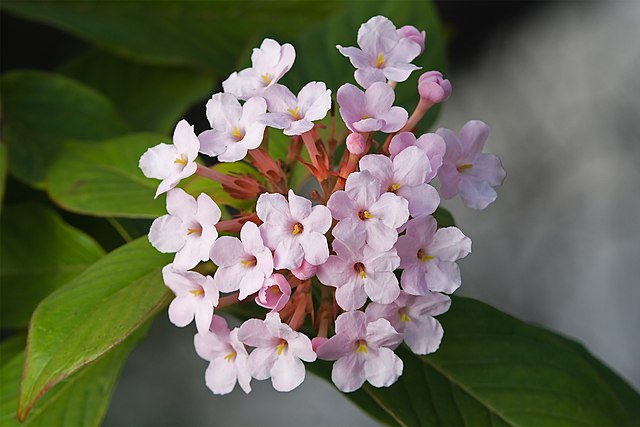Coffea arabica, also known as the Arabica coffee, is a species of flowering plant in the coffee and madder family Rubiaceae. It is believed to be the first species of coffee to have been cultivated and is the dominant cultivar, representing about 60% of global production. Coffee produced from the less acidic, more bitter, and more highly caffeinated robusta bean makes up most of the remaining coffee production. The natural populations of Coffea arabica are restricted to the forests of South Ethiopia and Yemen.
Image: Coffee Flowers
Image: Starr 070308 5472 Coffea arabica
Botanical drawing of Coffea arabica, around 1860
A Coffea arabica plantation in São João do Manhuaçu, Minas Gerais, Brazil
Rubiaceae is a family of flowering plants, commonly known as the coffee, madder, or bedstraw family. It consists of terrestrial trees, shrubs, lianas, or herbs that are recognizable by simple, opposite leaves with interpetiolar stipules and sympetalous actinomorphic flowers. The family contains about 13,500 species in about 620 genera, which makes it the fourth-largest angiosperm family. Rubiaceae has a cosmopolitan distribution; however, the largest species diversity is concentrated in the tropics and subtropics. Economically important genera include Coffea, the source of coffee; Cinchona, the source of the antimalarial alkaloid quinine; ornamental cultivars ; and historically some dye plants.
Rubiaceae
Alberta magna
Arachnothryx leucophylla
Asperula tinctoria








